Affiliate links on Android Authority may earn us a commission. Learn more.
OnePlus 10 Pro revisited: The good and bad, six months later
October 8, 2022
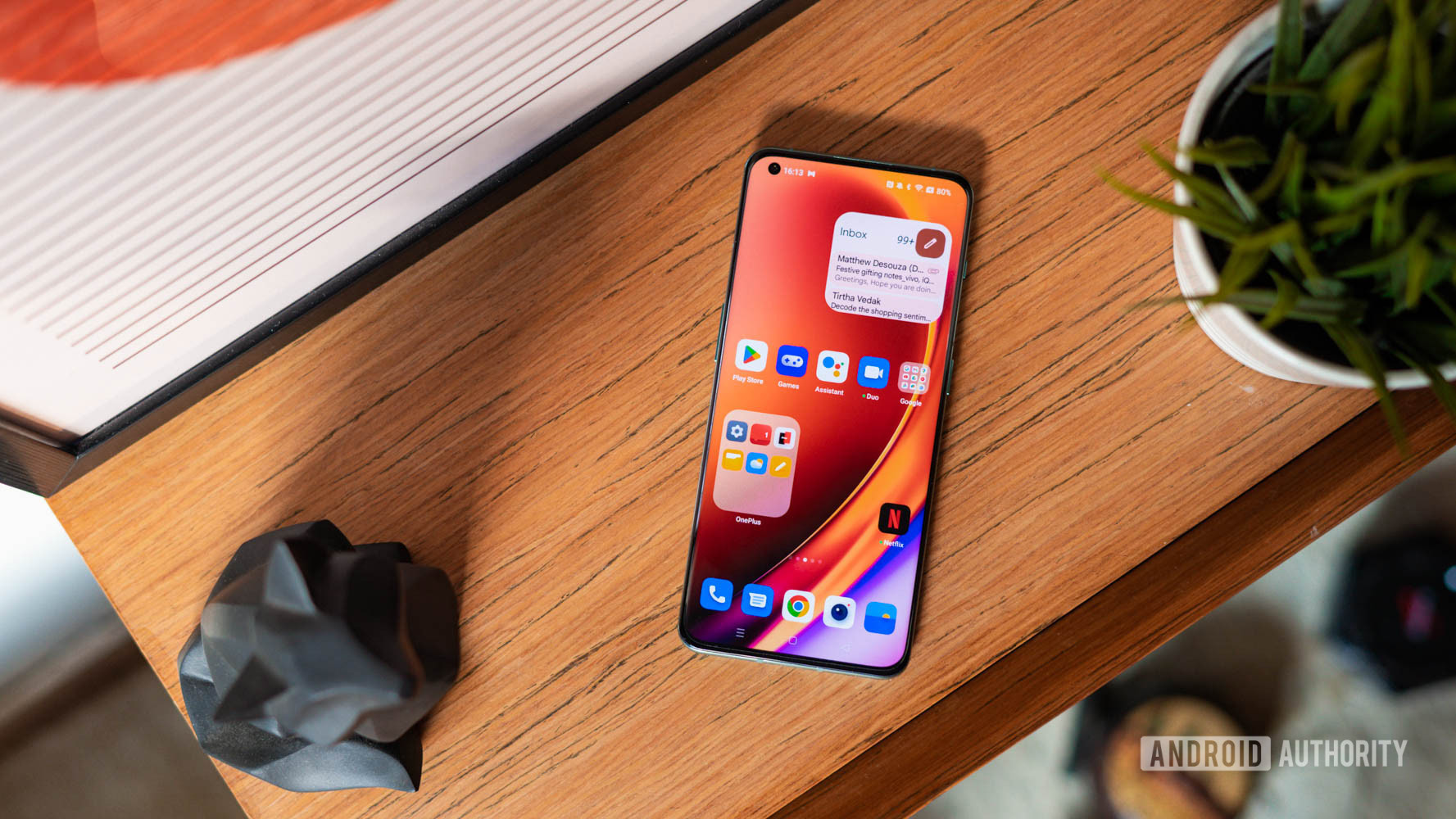
The OnePlus 10 Pro debuted as the company’s first smartphone developed as an OPPO sub-brand. OnePlus’ flagship phone for 2022 introduced a reimagined design with a bold camera island that made a statement. However, in our original OnePlus 10 Pro review, we found it to be an iterative update that erred on the side of being a bland appetizer to the scorching hot competition.
It’s now been over six months since the phone’s launch, and a lot has changed for better or worse. OnePlus has a proclivity towards making significant strides with software updates to the point that the day-one release isn’t always the best representation of the hardware. With that in mind, I decided to pop my SIM card back into the OnePlus 10 Pro to take a look at how well the phone has aged.
The good
While the OnePlus 10 Pro sits at the top of the company’s current lineup, we found it to clearly represent the company’s unsure direction. The lack of an IP rating and attention to detail on the software front, and, most importantly, a camera that still couldn’t nail the essentials; the OnePlus 10 Pro was, simply put, just not a strong enough entry to win an all-out recommendation. Since then, the phone has practically vanished from mainstream tech conversation due to significantly stronger competition. However, with a few price corrections behind it, the OnePlus 10 Pro could still appeal to users who are invested in the OnePlus ecosystem or just want a reliable and performant everyday smartphone.
Design and hardware
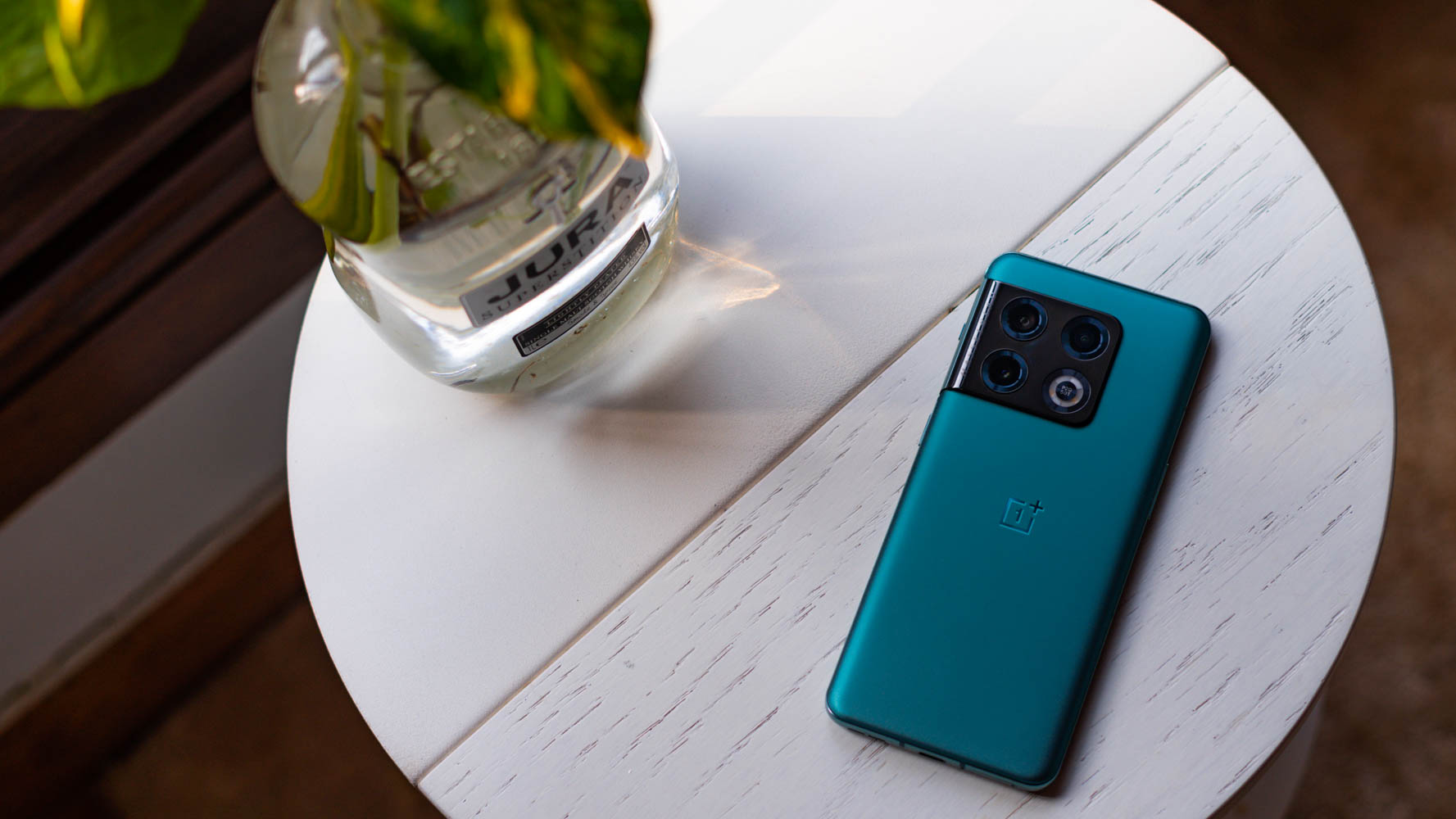
OnePlus flagships rarely, if ever, skip a beat as far as hardware quality is concerned, and the OnePlus 10 Pro is a testament to that. The Gorilla Glass Victus and aluminum frame wrap together seamlessly to create a phone that still looks fresh and distinctive — just like on day one. OnePlus also debuted a fresh emerald green finish with the 10 Pro. I liked it at launch, and I can’t say I’ve gotten bored of the colorway.
The emerald green colorway looks smashing, and does a fantastic job of hiding fingerprints.
The silky smooth matte back isn’t the best at ensuring a good grip. However, I came to appreciate how well the phone hid fingerprints and smudges. On the other hand, the camera island is much more of a fingerprint magnet, and the design remains polarizing, to say the least. I don’t mind it too much, but it certainly is a statement piece.
Another aspect of the phone that didn’t strike me as much during our initial review is the dimensions. Switching over from my usual daily driver, the sizable Samsung Galaxy S22 Ultra, the OnePlus 10 Pro instantly felt more comfortable and usable. Sure, it’s still a big phone, but the taller design goes a long way in aiding all-day comfort. I’m still not too enthused by the distinct seam between the display and the mid-frame, but I did learn to live with it.
The taller aspect ratio makes the OnePlus 10 Pro an exceptionally comfortable all-day companion despite its large 6.7-inch display.
Switching over to the display, the 6.7-inch AMOLED panel is still stunning to look at, and the adaptive 120Hz refresh rate makes a tangible difference in fluidity. While I initially tested out the phone with the display set to its Quad HD setting, I didn’t see much of a benefit in day-to-day use. I’ve since switched over to the Full HD+ setting to eke out a bit more battery life. I’ve faced no issues with color accuracy either, and the OnePlus 10 Pro does a great job at making content shine, be it watching the best new show on Netflix or my tenth playthrough of Chrono Trigger. I was expecting the OnePlus 10 Pro to be a downgrade for outdoor usability, considering its lower peak brightness levels compared to the S22 Ultra. This wasn’t an issue, and text remains perfectly legible even under direct sunlight.
As a reviewer at Android Authority, I get to experience a wide variety of phones. A consistent theme across those phones is, well, inconsistent biometrics, but not so with the OnePlus 10 Pro. The in-display fingerprint reader is one of the fastest in the business and makes short work of unlocking the phone — every single time.
Performance
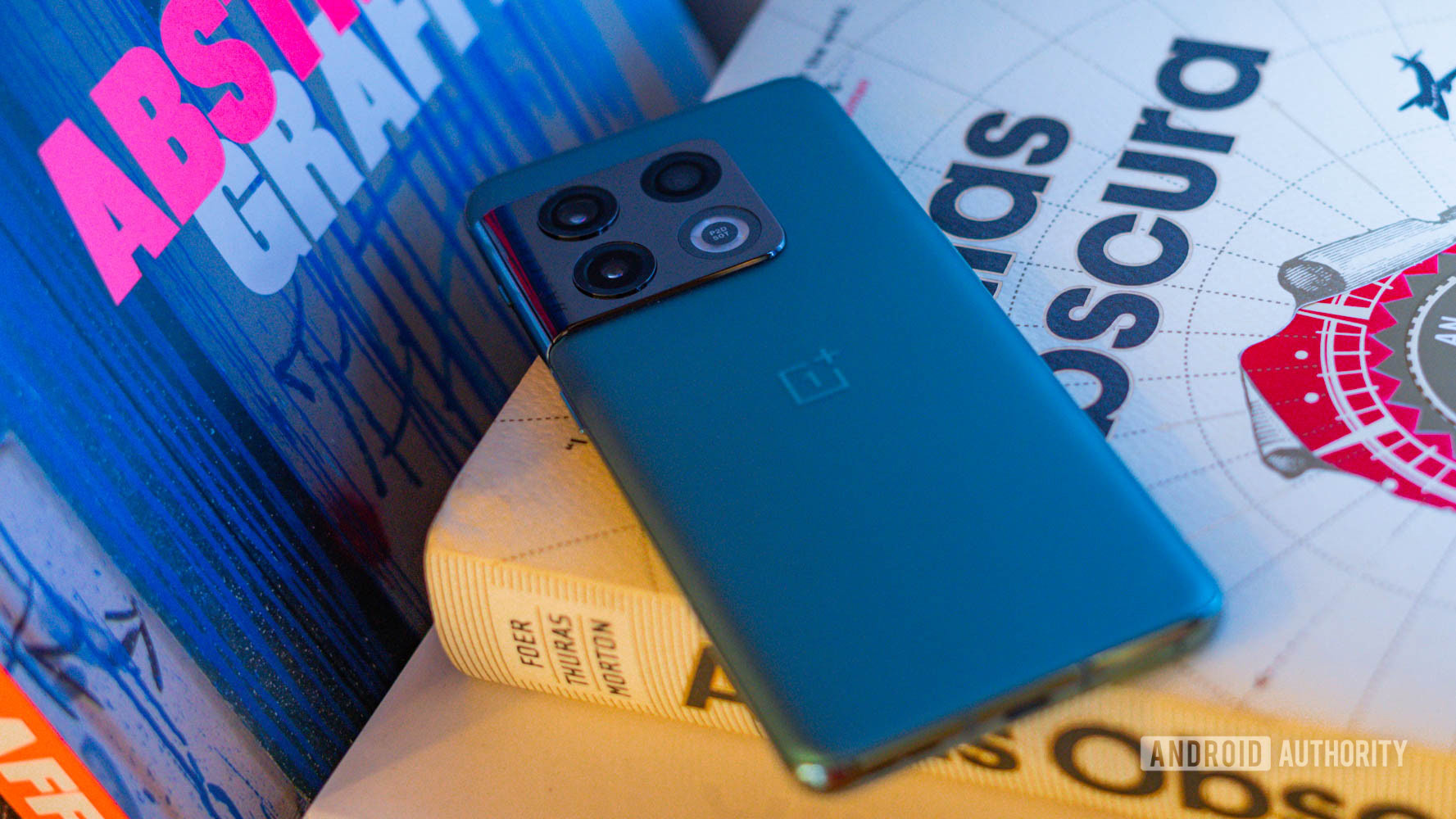
The OnePlus 10 Pro might not pack the absolute latest chipset from Qualcomm, but in my observation, it doesn’t matter much in the bigger picture. The phone is an absolute performance beast that never really slows down.
The Snapdragon 8 Gen 1 in the OnePlus 10 Pro can get toasty, but the phone remains a performance beast.
Performance has rarely been an issue with OnePlus phones, but software hiccups can often strangle performance over a few months of use — not so with the OnePlus 10 Pro. Over half a year since launch, the phone still flies with both everyday use, heavy multitasking, and my choice of gaming — retro emulation. Maxed out, the phone certainly gets warm to the touch like so many 8 Gen 1 phones — an issue somewhat resolved with the Plus variant found in the OnePlus 10T — but is rarely hot enough to raise concern.
The phone can be configured with up to 12GB of RAM and 256GB of storage, while base models start with a more modest 8GB of RAM and 128GB of storage. There’s no Wi-Fi 6E support here, which might be a bummer for users who crave the absolute latest in networking standards, but the OnePlus 10 Pro has all the other essentials like Bluetooth 5.2 and NFC built-in.
Battery life and charging
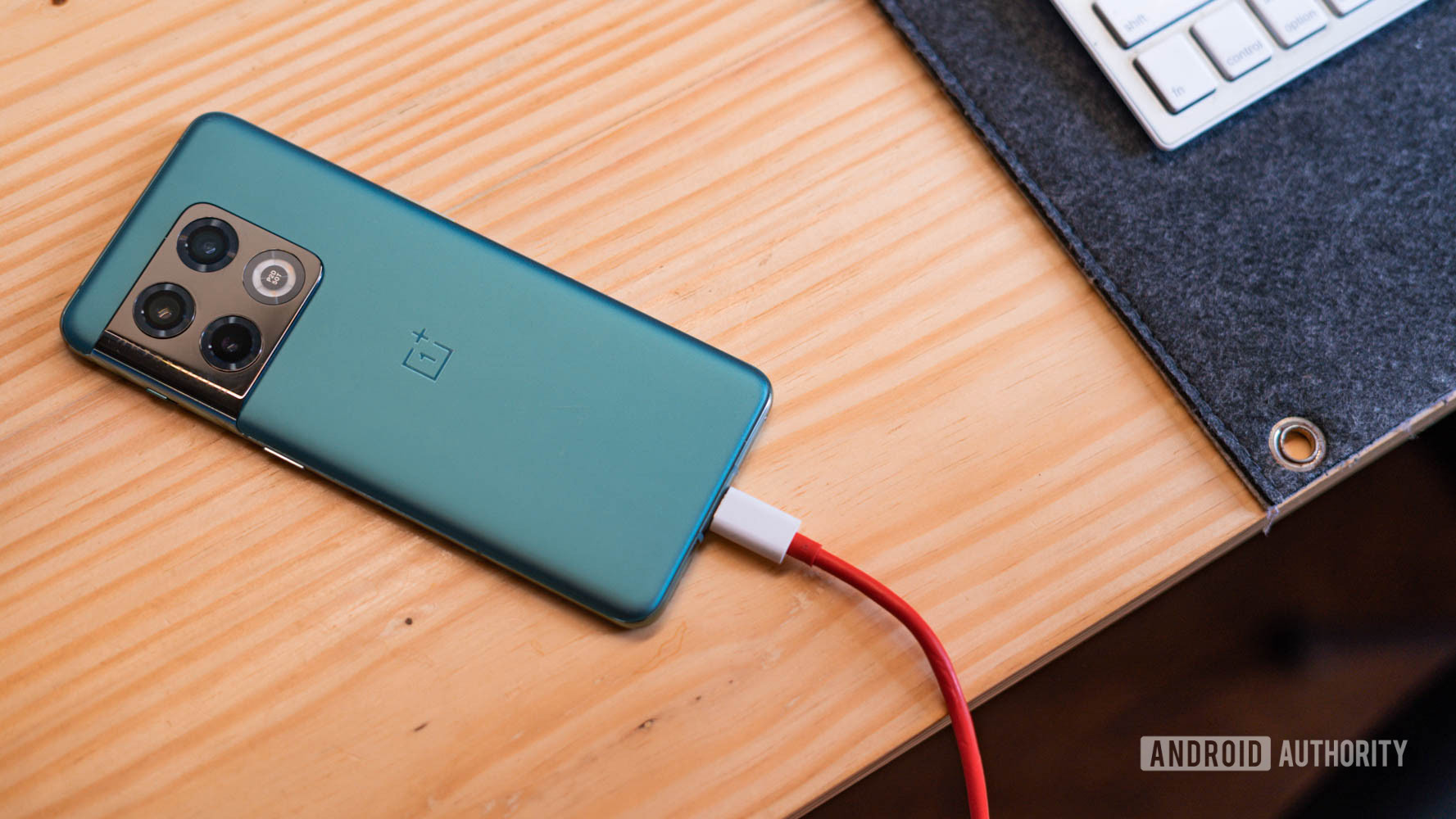
With a 5,000mAh battery under the hood, the OnePlus 10 Pro has the potential to go all day and then some. I kept the high-performance mode toggled off for the duration of testing, mostly because I never really felt the need for it. My daily use case revolves around hours of music streaming while at work, Slack and social notifications, emails, and WhatsApp messages. On most days, I’d still had around 20% in the tank by the time I was ready to call it a night. My daily use varies quite a bit but getting seven to eight hours of screen-on-time wasn’t out of the picture.
It's not the fastest available standard, but 80W charging gets you a full day's charge while you sip your morning cappuccino.
While the 80W SuperVOOC fast charging isn’t quite as eye-wateringly powerful as some of the newer options on the market, it’s still blazing fast. On days I was stepping out, I’d pop the phone on charge for ten to fifteen minutes which would juice it up enough to get through most of the day. For the sake of testing, I measured charging speeds once again, and, like in our initial review, it takes anywhere from 35 to 38 minutes to top up the phone, depending on ambient temperatures. Of course, models in the US only support 65W charging, but our testing has shown that this results in a few minutes of variance at most.
Most nights, I preferred to simply prop up the phone on OnePlus’s proprietary wireless charger that supports 50W charging. While I initially faced some niggles with the company’s optimized charging implementation, it seems to have been resolved, and the phone automatically throttled charging speeds till an hour or so before I woke up.
Related: Is wireless charging bad for smartphone battery health?
Finally, I was curious about the effects of ultra-fast charging on the phone, but so far, the OnePlus 10 Pro has fared quite well. With previous OnePlus phones, I’d observed that Warp Charge had a pretty noticeable impact on battery longevity after a few months. That doesn’t seem to be the case here, and I’m still getting a full day of use with ease.
Software updates
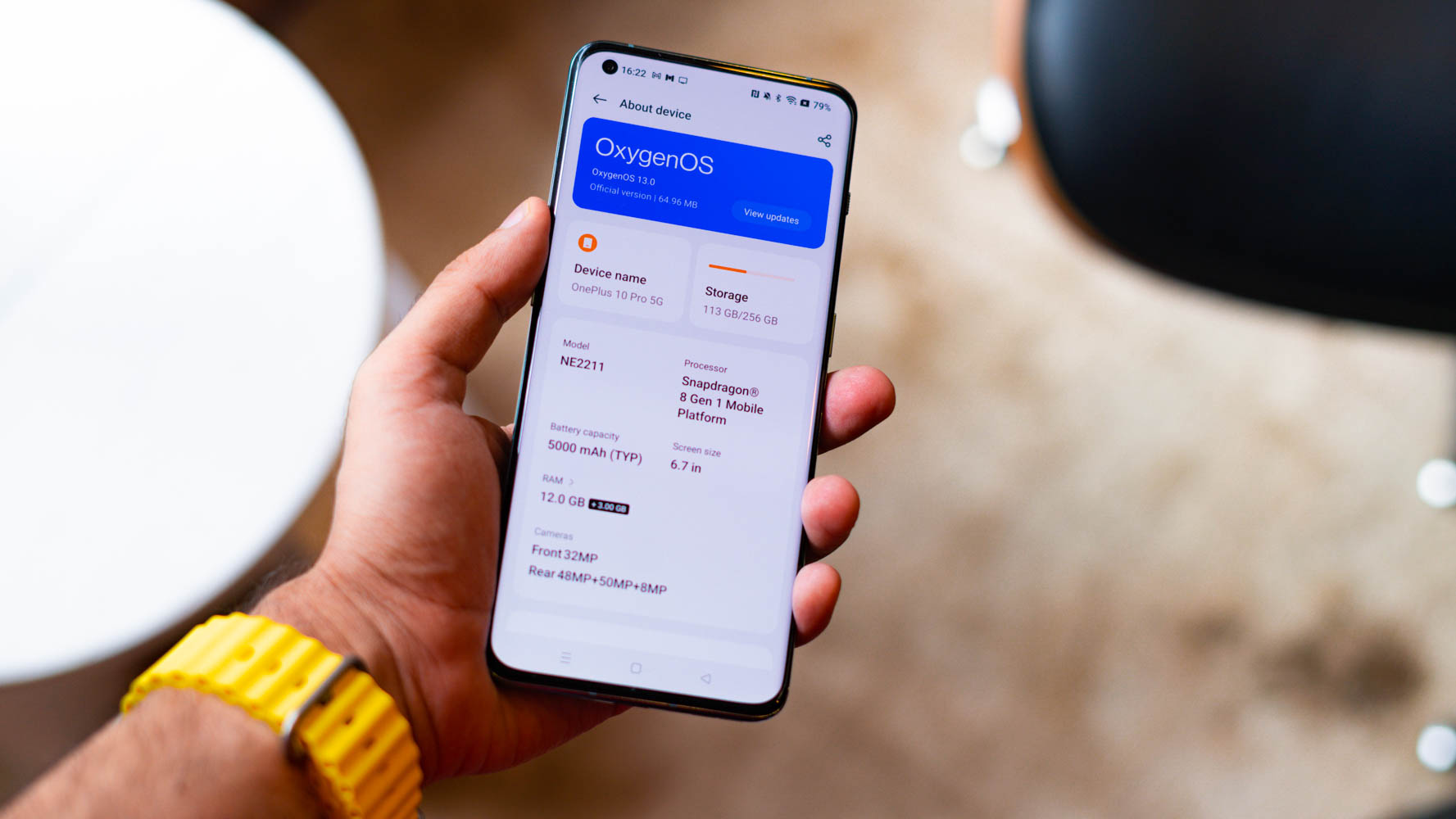
OnePlus phones haven’t always been on the cutting edge of software updates, but the OnePlus 10 Pro surprised me by getting the Android 13 update just a month after the Pixel phones. In fact, the phone has been getting a steady spate of software releases to fix bugs and optimize software over the course of the year. A minor quibble is that the promised three years OS updates and four years security updates isn’t quite up to the guarantees from Google and, to a greater extent, Samsung. That said, it’s still far from the worst long-term update policy.
As for the software itself, Oxygen OS 13 brought along with it yet another shift in design, but while I’m not a huge fan of it, there are a lot of useful features to be found here.
A large media tile now sits at the top, in addition to a row of upsized tiles that can’t be removed. The focus on embracing Material You guidelines is certainly appreciated, but what I truly came to love was the incredibly customizable always-on display. It’s a small thing in the grand scheme of affairs, but the seemingly infinite combinations of emojis, text options, and the terribly named “Omoji” make for a fun experience to go a step further in making your phone your own.
Oxygen OS 13 offers an infinite amount of customization to make your phone truly your own.
The phone also adopts many Color OS features, including the ability to make a floating app out of any app. A smart sidebar is also available, and so is a rather well-designed child-friendly section. I’ve been a OnePlus user for far too long, so I’m well-positioned to understand the annoyances stemming from feature overload. While I don’t particularly care about the design direction Oxygen OS is headed in, there are a lot of interesting tweaks to be found here that are right in line with personalization-obsessed OnePlus fans.
The not-so-great
Cameras
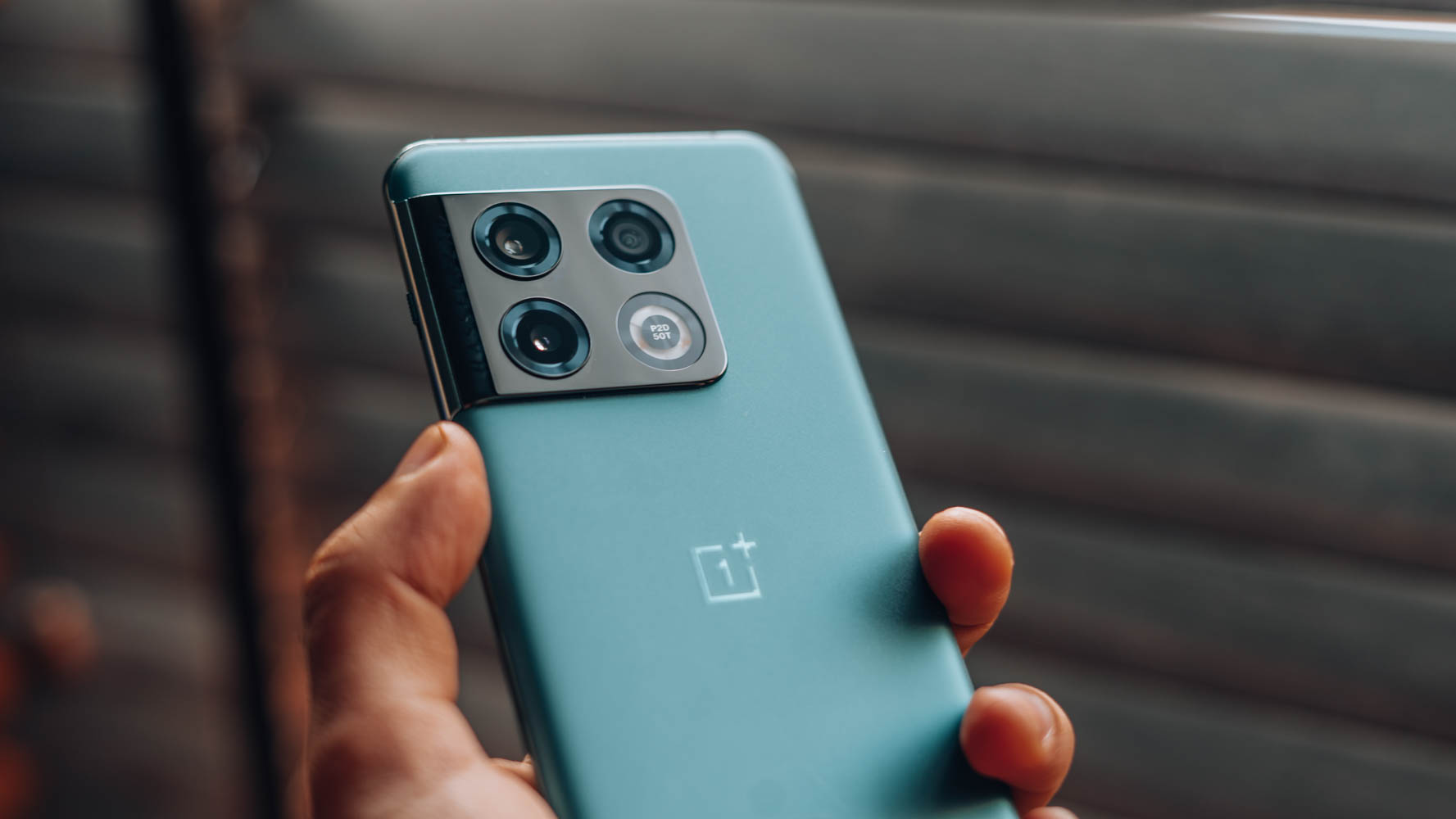
The OnePlus 10 Pro didn’t move the needle forward as far as camera hardware is concerned, and there’s only that much that OnePlus can do to build on a pretty long-in-the-tooth foundation. The primary 48MP IMX789 sensor is paired with a 50MP ultrawide camera and a surprisingly low-resolution 8MP telephoto shooter. Rounding off things is a 32MP front-facing camera. Head on over to this Google Drive link for some full-resolution camera samples.

OnePlus cameras at launch tend to be a bit of a disaster, but we’ve seen the company put in a bit more effort in recent years. Usually, things improve further post-launch. Unfortunately, that hasn’t been the case with the OnePlus 10 Pro. The best way to describe the primary camera on the OnePlus 10 Pro would be adequate.
The OnePlus 10 Pro's camera trio is adequate at best and can't hold its own against the stellar competition.
OnePlus still hasn’t shaken off its tendency to push colors too far with saturation, and increasingly, I’ve faced issues with exposure and focusing. HDR performance has certainly improved over the years, but it is nowhere as good as it needs to be to place the OnePlus 10 Pro in the upper echelons of the best camera smartphones.
OnePlus has done well to improve color accuracy across lenses, but issues persist. For one, the dynamic range is pretty limited. Dark regions in images tend to get crushed, and the OnePlus 10 Pro isn’t particularly good at taming highlights, either. Moreover, there’s a softness to the shots from the ultrawide sensor and the 3.3x telephoto shooter. The latter is to be expected, given the limited amount of megapixels at your disposal.
My issues with crushed shadows and limited dynamic range shot up when shooting indoors. Add to it a hint of oversharpening and a good amount of digital noise reduction, and you’ve got a recipe for not-very-pleasing shots. At a time when mid-rangers can output better results, the OnePlus 10 Pro’s camera ends up being a disappointment.
In fact, in some ways, the OnePlus 10 Pro’s camera seems to have gotten worse with time. Despite ample light, the camera fails to capture details in darker areas. A cursory glance under the sunshade on the left shows extremely elevated grain and noise. Meanwhile, the telephoto lens exhibits a distinct color shift towards cooler tones and blue hues.
A partnership with Hasselblad can't save the inherent weakness of OnePlus' camera engineering.
Overall, cameras continue to be the OnePlus 10 Pro’s Achilles’ heel. As it turns out, partnerships with brands like Hasselblad can’t save an inherent lack of camera optimization.
Refinement
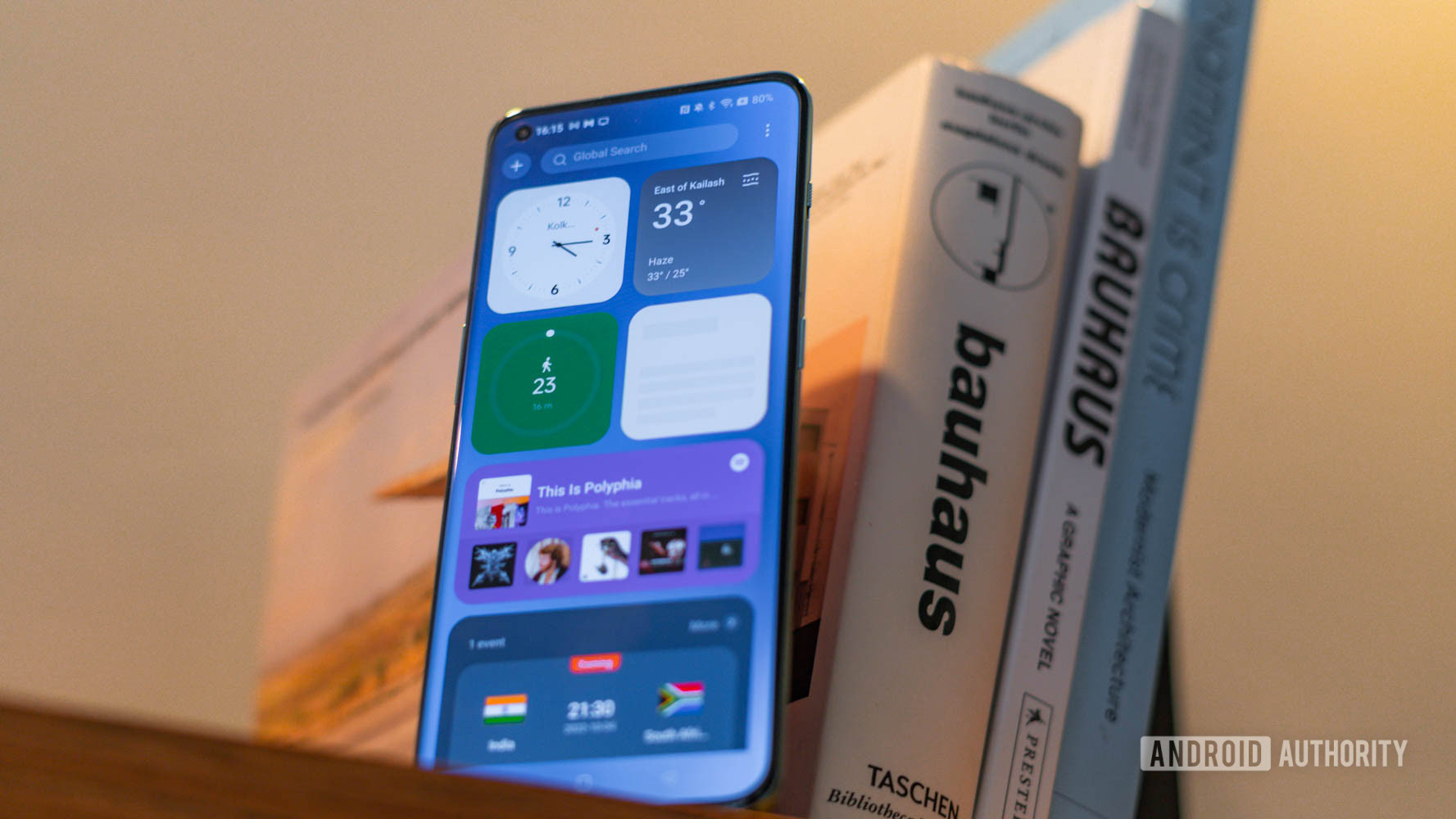
The underlying theme with the OnePlus 10 Pro is one of inconsistency. We’ve already highlighted the issues with the camera, but there are minor issues all around that keep the phone shy of achieving greatness.
For one, my gripes with auto brightness never really got fully resolved. To be sure, the situation is definitely improved with the OnePlus 10 Pro, but the display will often fail to bump up the brightness outdoors or set the brightness levels too high indoors. This shouldn’t be an issue for a company that has been making phones since 2014.
OnePlus needs to own its identity and stick with what works.
Over to the speakers, while I generally like the mid-focused tuning, the significant skew towards the bottom-firing speaker is grating.
Meanwhile, on the software front, the change for the sake of change approach must stop. OnePlus needs to own a certain identity and stick with it. The reduced density in the notification shade and oversized icons might look pretty but certainly don’t contribute to productivity.
OnePlus 10 Pro review revisited: The verdict
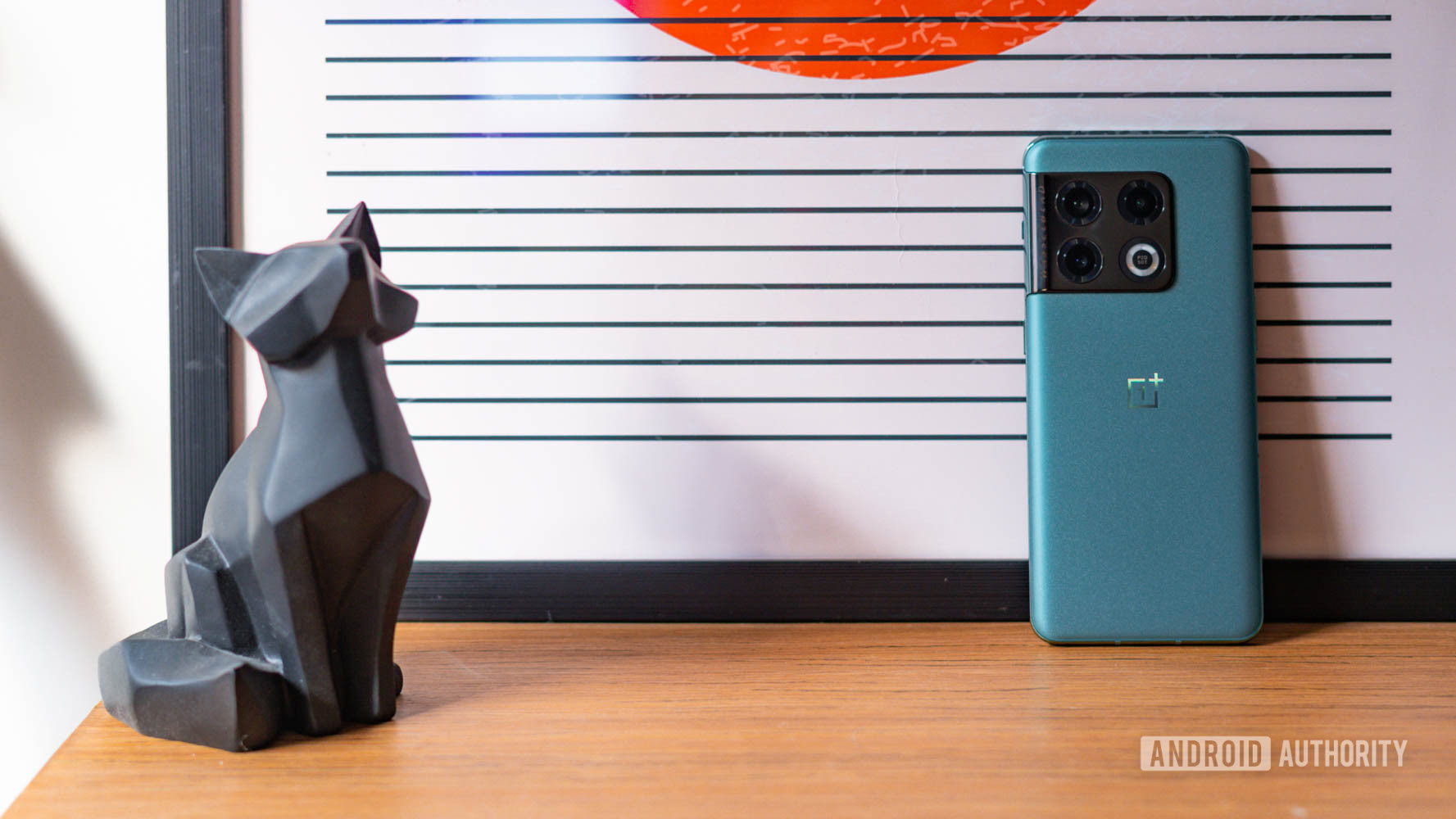
The OnePlus 10 Pro is, for better or worse, a perfect example of a modern OnePlus. It’s not a bad phone, but a true-blue flagship, it ain’t. In more ways than one, the OnePlus 10 Pro reminds me of the first OnePlus phone, the OnePlus One, where the focus was entirely on performance, a smooth interface, and good battery life. Everything else is fair-game for compromises — something we saw to an even greater extent with the more affordable OnePlus 10T.
The OnePlus 10 Pro epitomizes the OG OnePlus experience — for better or worse.
The latest and greatest from OnePlus might’ve received a few price cuts to better position the smartphone against some of the best OnePlus 10 Pro alternatives in the premium flagship segment, but it doesn’t take away the misses like the lack of an IP rating, iffy cameras, and perplexing software choices.
Is the OnePlus 10 Pro still worth buying?
Once you factor in incredibly polished alternatives like the Samsung Galaxy S22 and S22 Plus, Apple iPhone 14, the or the Pixel 7 series, the OnePlus 10 Pro makes you start questioning if it is worth splurging on the company’s half-hearted effort. Overall, the OnePlus 10 Pro is adequate as a OnePlus flagship and a fair buy if you can find it on a great deal, but adequate just doesn’t cut it anymore if you want to rank among the very best. Here’s hoping the OnePlus 11 Pro can do just that.
